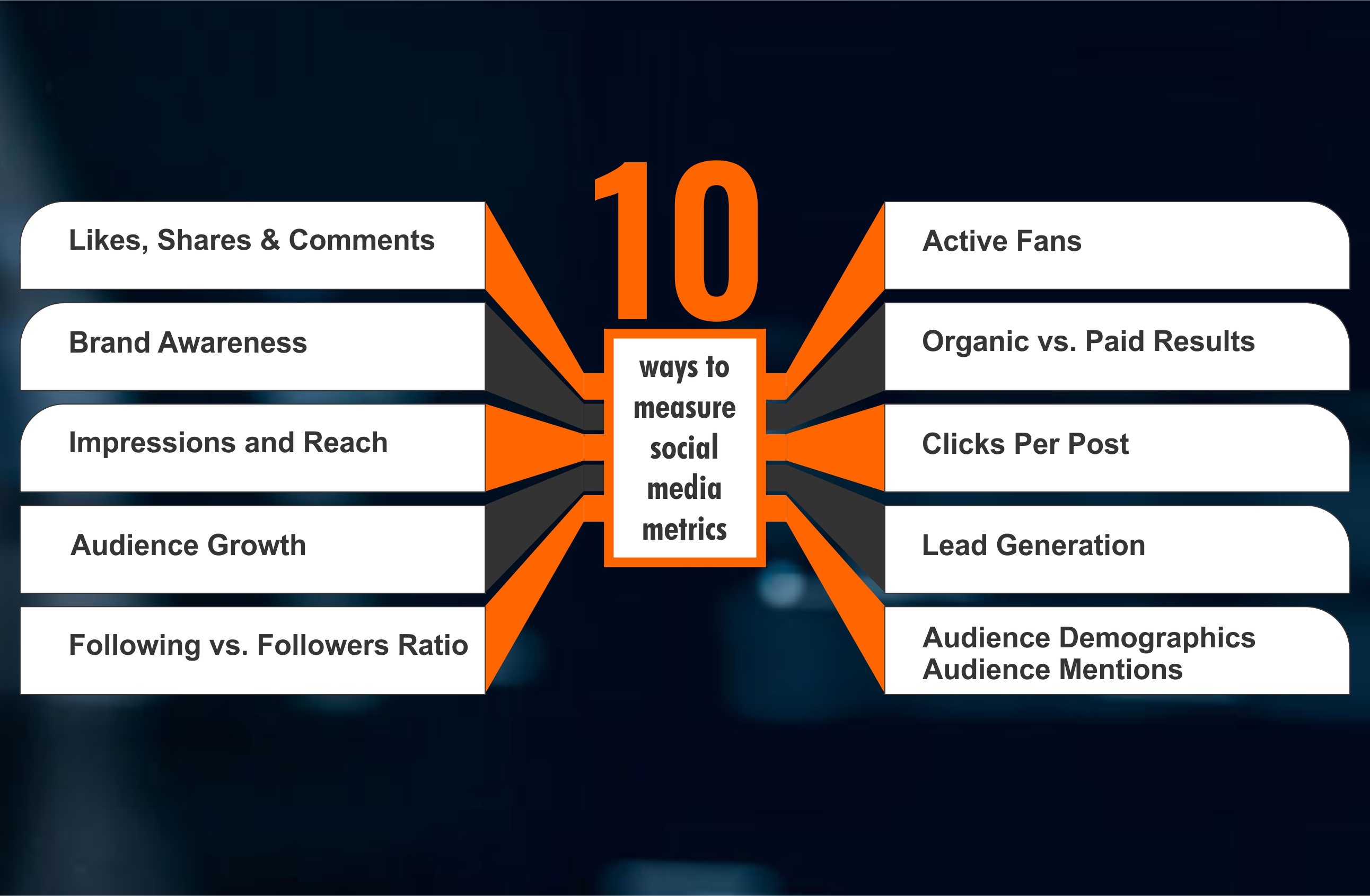10 Ways to Measure Social Media Metrics
It's virtually impossible to envision a time without social media updates, likes, and shares in our ever-evolving digital culture. Where else can you locate a massive database of your target audience who already are planning to read, click, and share your message? If your target audience reads, likes, and shares your content, now the major point is how will you measure the social media metrics?

Fortunately, most social networking services include a dashboard with all of the necessary information.
If you're monitoring many social profiles on several networks and running many ad campaigns, though, a media monitoring tool that provides all of the information you need in an easy-to-understand style can help.
Despite these figures, many businesses remain skeptical about social media's effectiveness since it is difficult to quantify. How do you tell whether or not your social media strategy is effective? How do you calculate the return on your social media investment?
We’ll go over ten ways to dependably measure your social media metrics
Likes, Shares & Comments:
Individual engagement metrics add up to a total amount of engagements for your article or profile. A single engagement statistic will not provide you with the context you require to make informed decisions about your social media marketing plan. We recommend analyzing a variety of indicators, including engagement measures, rather than focusing primarily on these. It's also vital to keep in mind that not all of your postings will necessitate interaction.
Brand Awareness:
During a reporting period or a set period that provides statistically meaningful data, brand awareness is defined as the amount of attention your brand receives across all social media platforms. A range of social media indicators, such as @mentions, shares, links, and impressions, can be used to measure attention. The length of reporting periods varies, although they commonly span a week, a month, or a quarter.
Impressions and Reach:
Reach and impressions should be included in your social media metrics report if you want to improve brand awareness and perception. The amount of unique social media users that have seen your material is referred to as reach. It shows how popular your material has become. Impressions, on the other hand, show how many times a post appears in a user's timeline on social media. Impressions provide you information on how many people noticed your posts even if they didn't click, comment, or otherwise interact with them. The most significant distinction between impression and reach metrics is that impressions track the total number of times your content is viewed by your target audience. The quantity of individuals who see your material, on the other hand, is known as reach.
Audience Growth:
The next step is to keep track of how quickly you're gaining new followers. Gaining followers is important for your business or an organization. It shows how much you are getting traction for your posts. Media monitoring tools help you to get an analysis of your audience growth in an easier way.
Following vs. Followers Ratio:
It may appear desperate if you have 200 followers but are following 500 individuals. Maintain a balance between the number of individuals you follow and the number of people you follow.
Active Fans:
Keep track of the number of people who engage with your company on social media. Continue to communicate and see the number of active fans grow. Media monitoring tools can give a better understanding of the number of active fans increasing.
Organic vs. Paid Results:
When running a PPC (pay per click) strategy, it's critical to keep track of the ROI to determine whether you should reinvest or not. Media monitoring tools will help you track the results in a better and easier way.
Clicks Per Post:
It's critical to keep track of how many clicks you get when you share clickable content on social media. Media monitoring tools can help you in getting these pieces of information as well.
Lead Generation:
Keep track of how many people arrive from your social media networks to your website. To better track, UTM attributes can be used. UTM parameters are simple bits of code that you may add to URLs, such as the ones you share on social media. They contain details about the link's location and purpose, making it easy to trace clicks and traffic from a particular social media post or campaign. Although this may appear to be a complex term, UTM parameters are actually fairly simple and straightforward to utilize.
Audience Demographics:
These demographics are important because they help you construct a picture of your target audience, despite the fact that they are often overlooked.
Audience Mentions:
Giving no heed to what is being said about your company can be extremely detrimental to it in the long term.
To ensure proper media monitoring metrics these pointers are valuable and effective. Media monitoring tools will help you to go ahead with your content or campaign, and they will give vast and authentic results and metrics for your content.
